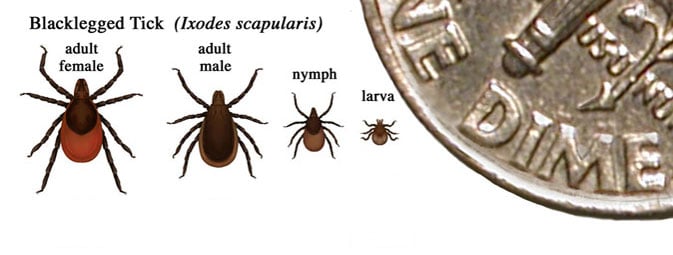Lyme Disease in Canada Hosted by White-Tailed Deer
"So it's a multi-pronged approach to recruit patients across Canada to increase our knowledge of the natural progression of this disease and how it's resolved, as well as improved diagnostics."
"We want to follow patients who get Lyme disease, from their initial diagnosis all the way through for the first two years after their diagnosis and treatment. We want to look for any complications or failure in the treatment."
"By doing that, we're going to be able to detect, for the first time in Canada, what are the circulating strains of Lyme disease in humans and is there a change in the severity of the strains between what's in the United States and Canada?"
"It's a benefit to the patient [who agrees to help in the research] because we'll follow them closely to make sure their symptoms are resolved and the patient will be helping the community to understand this disease."
"Are there methods that we can create in our environment that we can reduce the presence of ticks?"
Dr. Kieran Moore, professor of emergency and family medicine, regional medical officer of health, Queen's University
 |
| Blacklegged or deer ticks, which can carry Lyme disease, are increasingly surviving Canada's warming winters. (CDC/Associated Press) |
A team of researchers led by Dr. Moore and including Dr. Richard Resnick, dean of health sciences at Queen's University who had previously established a multidisciplinary team to investigate the disease now so prevalent (as an adjunct fallout linked to the phenomenon of Climate Change) throughout Canada has received a $4-million grant through the Pan-Canadian Research Network on Lyme disease, funded by the Canadian Institutes of Health Research and the federal government.
Included in the network to focus on gaps in the protocol currently used in prevention, control, diagnosis and treatment of Lyme disease will be scientists, clinicians and patients. Blacklegged ticks, carried by deer, transmit the infectious disease to people when a tick in its immature nymph stage bites. Most people are left with an expanding red rash at the tick-bite site accompanied by fever, chills and symptoms similar to those of the flu.
Other people, however may experience far more serious symptoms affecting heart, joint and resulting neurological disorders. If a diagnosis is not made correctly identifying the infection and remedial action taken, lifelong effects can haunt and diminish people's health. The intention of the team is to collect data from patients where tick bites and Lyme disease are rife. Southeastern Ontario, the south shore of Nova Scotia and the St.Lawrence River close by Sherbrooke, Quebec, and Manitoba have been identified as prime Lyme disease sites.
 |
| In general, adult ticks are approximately the size of a sesame seed and nymphal ticks are approximately the size of a poppy seed. Centers for Disease Control and Prevention |
Canada has seen previous efforts on an ongoing basis through surveillance, research, best-practise sharing, laboratory diagnostics and testing, along with prevention education and public awareness through education, but this latest concerted effort is meant to tie everything together with an enhanced focus on better understanding the transmission of the infection and how best to both avoid and treat the infection, alerting the general public in the process,
The first step in launching the research study is to convince patients with Lyme disease that it is in their best interests and that of the public at large to agree to allowing researchers to extract biological samples: blood, urine and skin scrapes surrounding the rash that appears after a tick bite. Dr. Moore anticipates that the tests that will ensue will turn out to be sufficiently sensitive to isolate strains of the infection seen to be particular to Canada.
He foresees the potential of between 500 to a thousand people who have been tick-bitten will agree to become involved in the research over the following four years, after its April 2019 initiation (the bites occur in spring primarily, followed closely by infection symptoms). The ultimate goal is to succeed in improving diagnosis and treatment of Lyme disease, and at the same time increase the efficacy of public education as well as alerting health-care providers.
Reducing the risk of Lyme disease transmission by somehow altering the environment that nurtures it is yet another hoped-for result.
Ticks live in some of our favourite outdoor places; like grassy fields, the woods, gardens, beaches and nature parks. Ticks need blood to survive, so they choose to live in habitats frequented by potential mammal hosts. Areas with dense deer populations are often Lyme disease hotspots.
Lyme-carrying ticks can be found across the country, yet eastern Canada consistently reports the highest rate of infection. There are several contributing factors, but a major one is eastern Canada’s large population of White-Tailed Deer – the deer tick’s preferred host.Eastern and central Canadian provinces also share borders with Lyme “hotspots’ in the United States and are within flight distance for ticks catching rides on migratory birds.
Despite the frequency of infection, Lyme disease awareness is still relatively low in the east.

Labels: Health, Infection, Lyme Disease, Research, Ticks

0 Comments:
Post a Comment
<< Home